Sofie Tobiášová & Tobias Izsó – Between the Doors
September 7, 2024 — October 26, 2024
hunt kastner (project_room), Prague, Czechia
– photo report on Kuba Paris
– photo report on Tired Mass
– photo report on Collector’s Agenda
– photo report on Art Mirror
– photo report on Artalk
– photo report on Prague Art Week
“This gave rise to endless mistakes; for having once stepped into the wrong hallways and onto the wrong stairway, one usually found oneself in a veritable labyrinth of strange apartments, porches, unexpected exits into unfamiliar courtyards, and entirely forgot the original purpose of one’s expedition, to remember only many days later, with pangs of conscience – returning on some gray dawn from the detours of strange and tangled adventures – the family home.”1
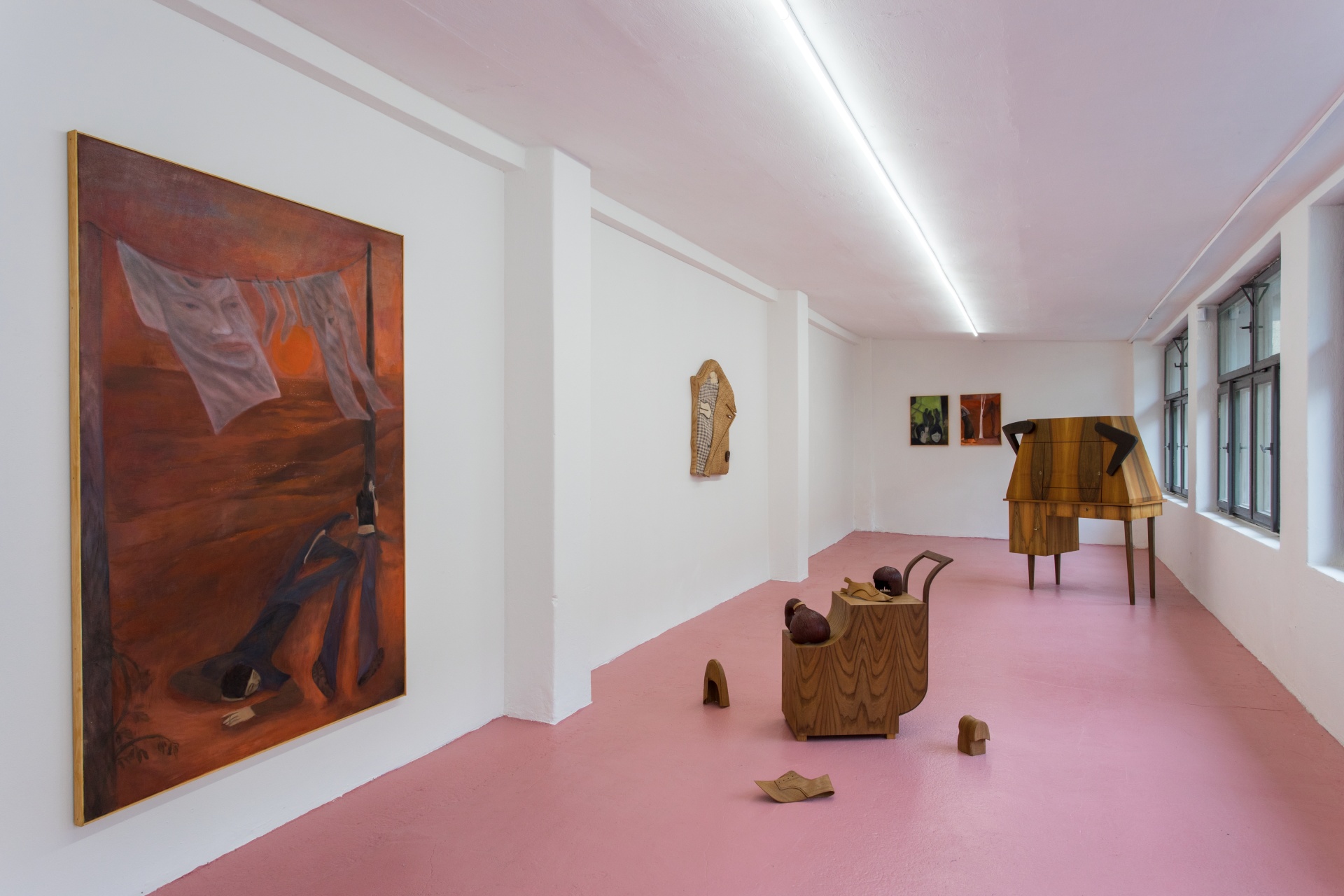
A quiet melancholy and a certain type of nostalgia fills the intimate space of the courtyard space of hunt kastner. In the hazy flood of the blushing floor, whose reflections softly lick the walls, familiar objects of domestic life appear at first glance: an antique wooden cabinet, a wig cart, kicked-off shoes. A few canvases in warm colours furnish the austere white surface of the walls. The air almost seems to smell of bergamot tea, the letterbox full of unopened post, and the telephone, the one next to the brass ashtray, relentlessly droning in the distance, offering a smoky evening glass of wine. But beneath the veil of the warm familiarity that Sofia Tobiášová and Tobias Izsó are building, one can sense a tension. As if by our presence, we have intruded on the private lives of things, become part of a moment when they too need to take a moment to breathe, giving us a glimpse of their unmasked face beneath the surface of the mundane, when the mid-century cabinet shows its own hands and the drying laundry trapped in the canvas shows its face.

Both artists work with motifs that have a strong anthropomorphic quality – furniture, objects, even situations live and react to us, forcing us to reflect on our own identity and everyday rituals. The artistic grasp of the nature of things or situations by Tobiášová and Izsó brings to light the impressions that define particular phenomena for them when one is not looking, but rather just feeling. Although Tobiášová’s canvases are highly imaginative, they carry with them something frankly known, almost retrospective, moments that the memory only becomes aware of when it is not disturbed: in one, we observe the moment of drowning one’s own still sleepy raw unedited reflection in the siphon of a jade basin; in another, majestic horses in the flood of the burning rural sun; in a third, the vernissage guests in the dim city lights.
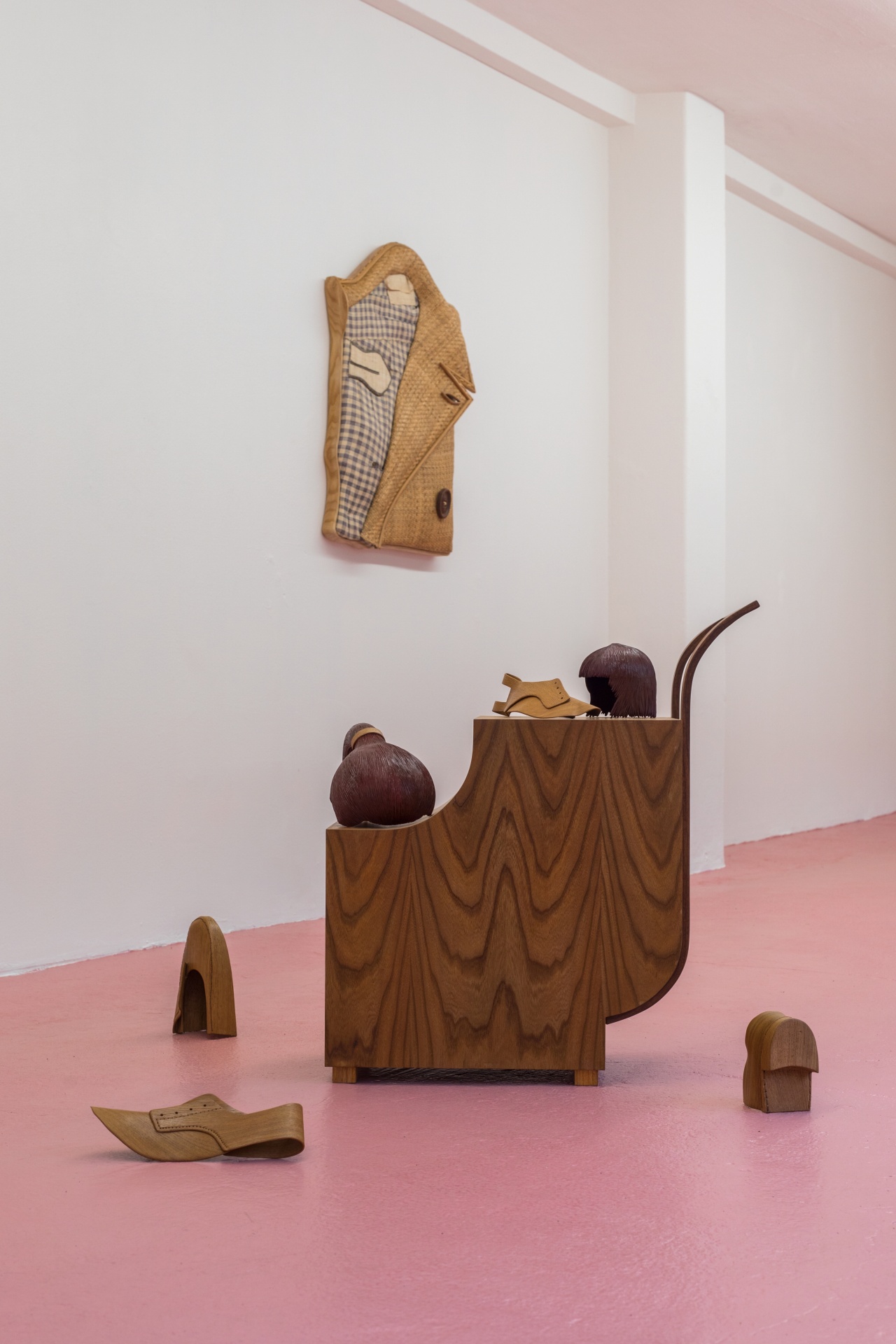
The anthropomorphic quality of Izsó’s mid-century cabinet evokes a sense of unease when we’re not sure whether it/he is attacking us or about to embrace us, just as when the wispy wig and leather derby shoes are corroded in material that is not their own. The finely crafted veneer that Izsó uses on the surface of his objects is reminiscent of a performative shell – how much pain does it take to step through a new fashionable pair of shoes, and how bittersweet is it to put away the wig after a long evening of socializing? And what does their silent presence actually tell us about ourselves? The well-being of artefacts seems to have abandoned their function; they wake up and claim their own fate. The quotidian and its authentic representation becomes a metaphor for the complexity of the self, where even furniture or clothes struggle with existential anxiety.

The surreal optics of Tobiášová’s paintings and the playful allusions to the worn-out comfort of the petit-bourgeois world of Izsó evoke a world that may have long since disappeared, a childhood memory of yesterday or perhaps a half-imagined memory in which people are phantoms – sometimes present, sometimes lost in an environment that is more human than themselves. This leads to a light-hearted exploration of the intertwined connections between identity, heredity (familial, cultural, artistic), norms and roles in the world. Tobiášová’s and Izsó’s exhibition can therefore be seen as a glimpse through a keyhole, a space between what we know and what we have yet to discover, a moment of flipping through someone else’s diary, a moment just before we turn on our heel on the threshold of a mistakenly chosen doorway and catch a glimpse out of the corner of our eye of the unsuspected, the shared and yet deeply private.

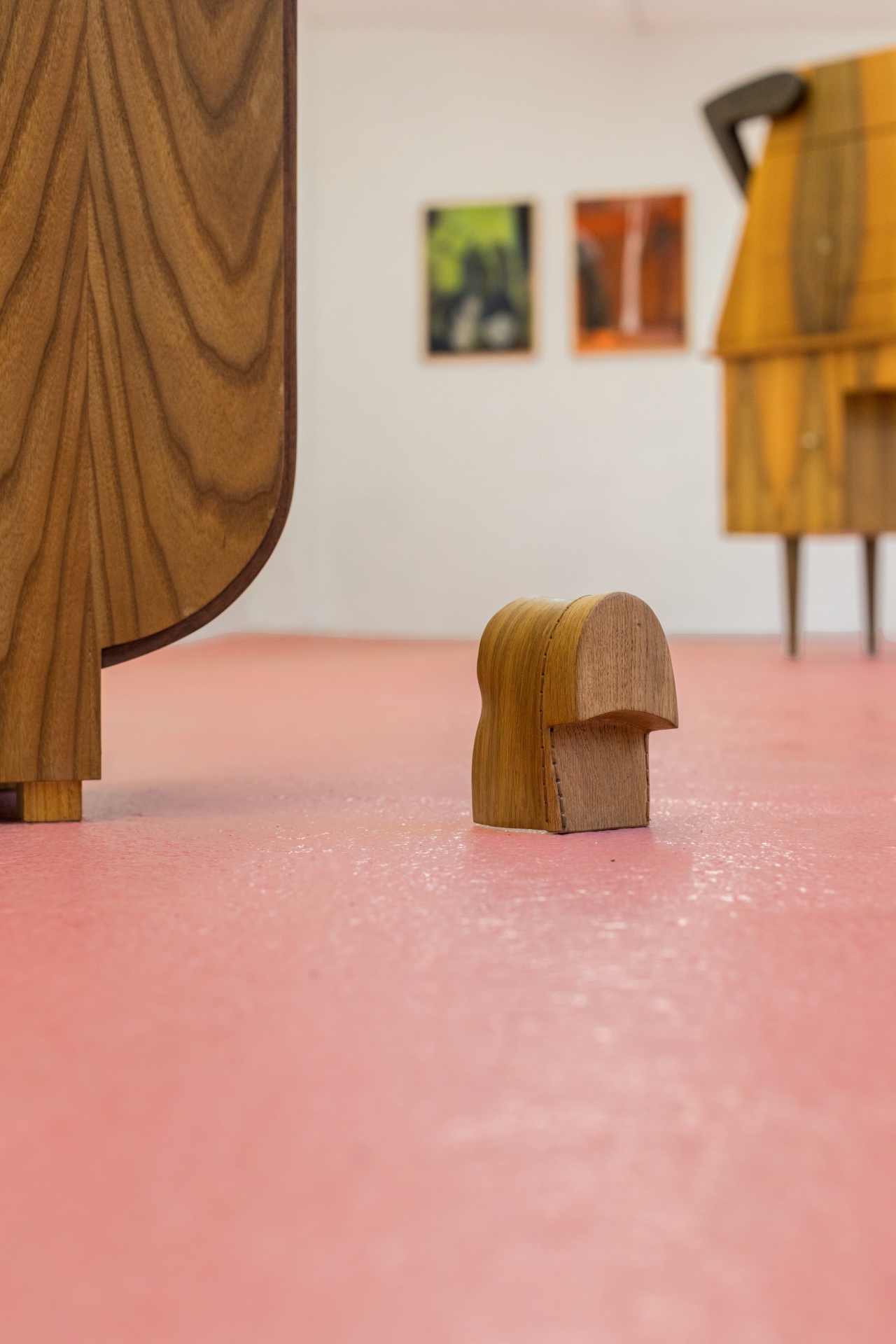
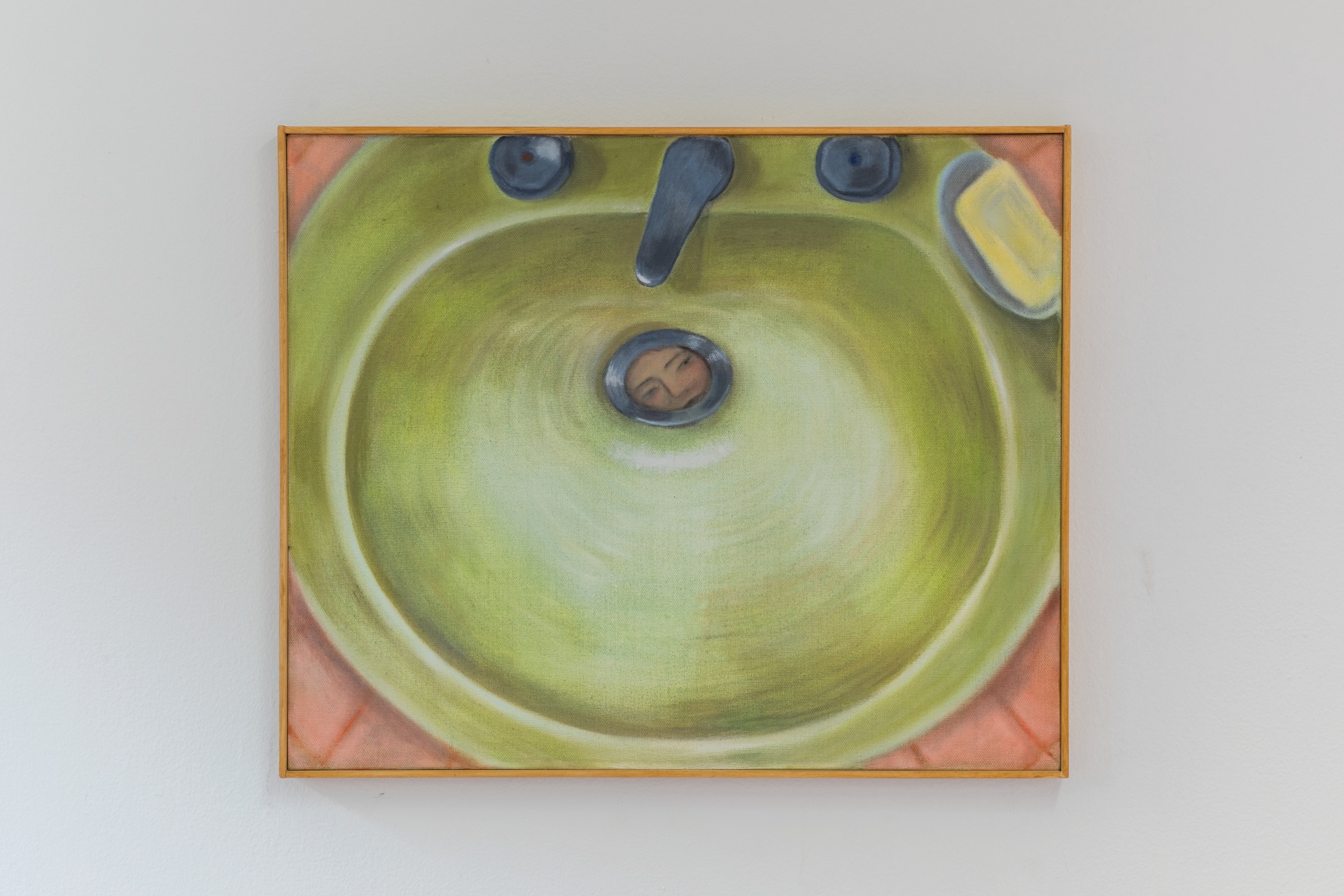


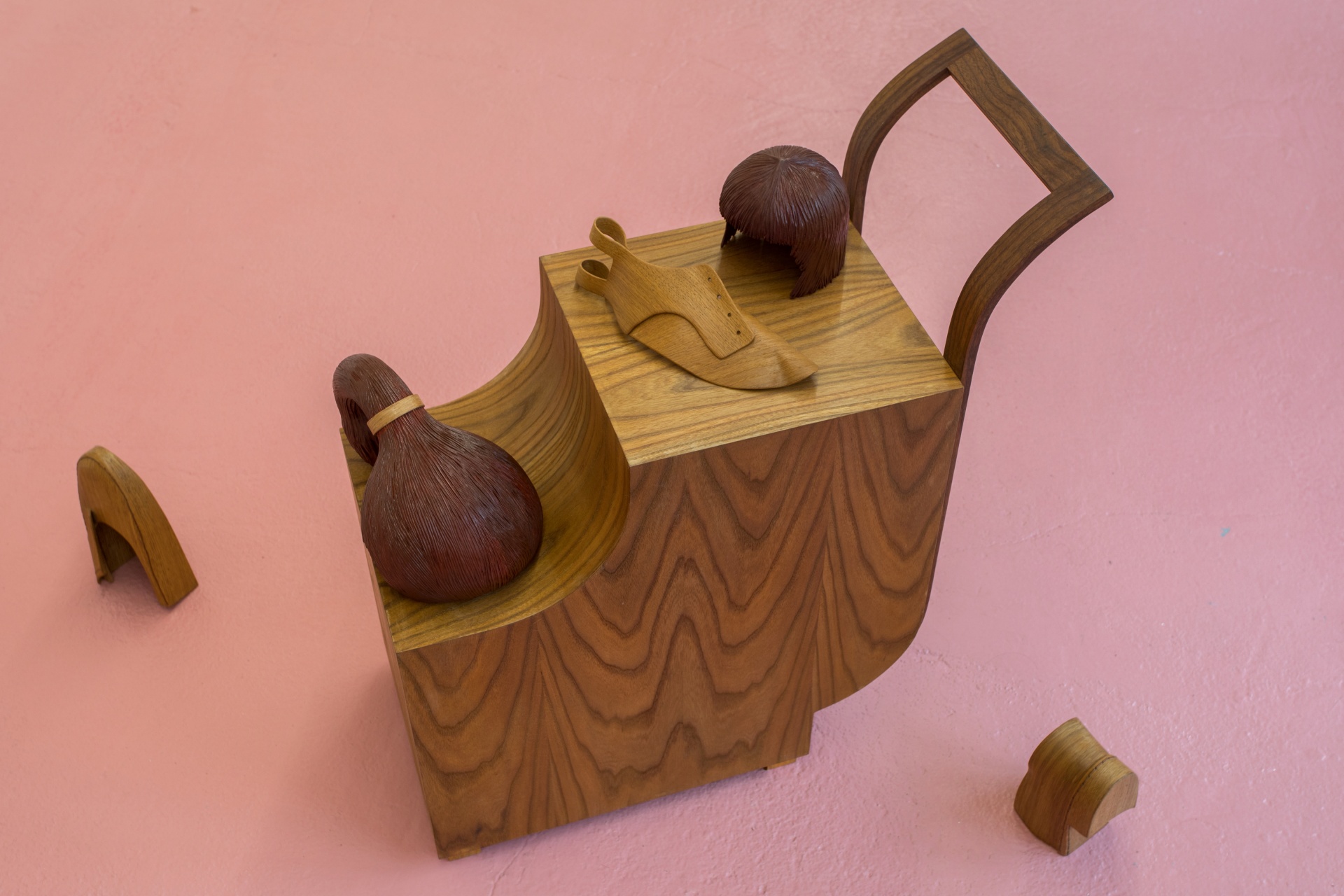
Sofie Tobiášová (*1996) is a graduate of the painting studio Fine Arts II (Jiří Černický, Michal Novotný) at the Academy of Arts, Architerture & Design in Prague (UMPRUM). She also studied in the painting studio of Henning Bohl at Die Angewandte in Vienna, and in 2019 she completed a study internship at the Bazalel Academy of Art and Design in Israel. Since 2022 she has been living and working alternately between Prague and Italy. Her work is a collection of objects and situations, based on everyday life and viewed through the lens of dreams and personal mythology. Tobiášová has exhibited solo at her home gallery UNA (Piacenza, Italy), Berlínský model, City Surfer Gallery and Holešovická Šachta. Currently, her works can be seen at the Zlín Youth Salon (Triennial of Contemporary Art, starting 17 September) and she has an upcoming group exhibition at Galleri CC (Malmö, Sweden).
Tobias Izsó (*1997) graduated from the photography studio of Die Angewandte in Vienna under Gabriele Rothemann, but it was during his studies that he decided to focus on sculpture (object). In 2021 and 2022, he thus underwent two sculpture internships in Prague: once at the Academy of Fine Arts, the second at UMPRUM. His artistic practice is characterised by working with assemblage - he intricately carves, bends, varnishes and decorates various materials such as wood and textiles (whether new or recycled) or found objects, thus shifting their levels of meaning. In doing so, he draws on the objects of domestic life, challenging the narratives we attribute to personal spaces and things. He has exhibited at Galerie König 2 in Vienna (solo), Fotogalerie Wien, and the Austrian Cultural Forum in Prague. Currently, his work can also be seen at the Holešovická Šachta and Galerie TIC (Brno). Future exhibitions are planned at the Lentos Museum (Linz, Austria) and the Kunstverein Dresden (Germany).
1 Bruno Schulz, Cinnamon Shops, 2016, online p. 4–5.